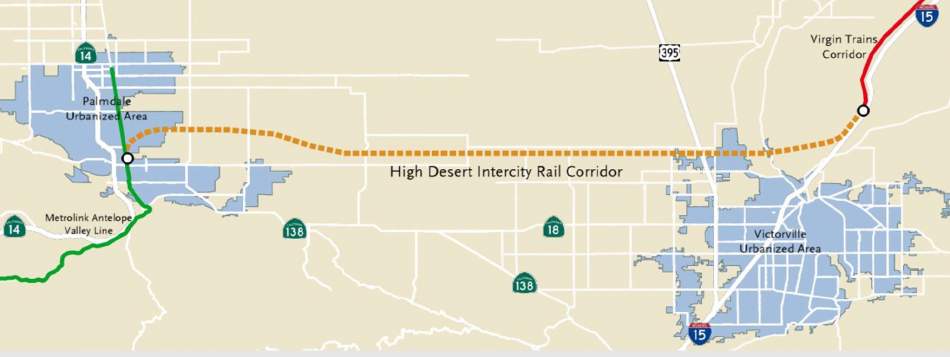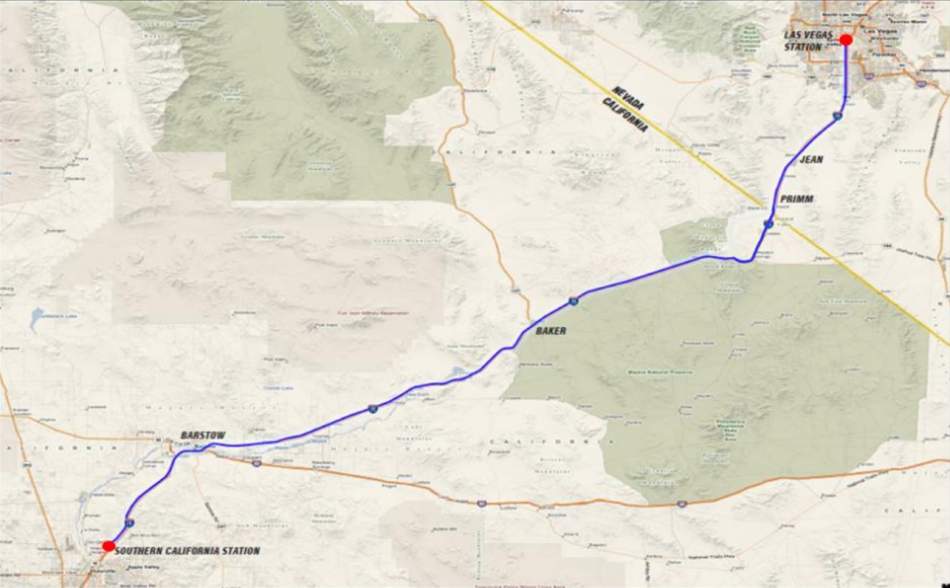Later this year, construction is scheduled to begin on the XpressWest high-speed rail train connecting Las Vegas with Southern California. Now, the project's backers and Los Angeles County officials will grapple with how to connect the rail line with Metrolink and the California high-speed rail system.
At its meeting on August 19, the Metro Board's Planning and Programming Committee voted to allocate $3 million from the Measure M High Desert Corridor project toward the development of 54-mile intercity rail service between Palmdale and Apple Valley - site of the future western terminus of the XpressWest project.
The funding would be coupled with a $625,000 payment frpm XpressWest as well as a roughly $1.37 million grant from the State Transit Intercity Rail Capital Program, accounting for a total budget of $5 million.
Metro's contribution to the project will include a $1.5 million advance from Los Angeles County's Fifth Supervisorial District Proposition A Local Return Transit Program. Metro is expected to repay the County by 2023, pending availability of funding.
The service development plan, which is being coordinated with San Bernardino County and several independent cities located along the corridor, will include some preliminary design plans, as well as an analysis of potential stations, and analysis of riderhsip potential and travel demand.
Prior to any connection via the High Desert Corridor, the 170-mile XpressWest project is scheduled to make its debut in 2023. With trains running at maximum speeds of 200 miles per hour, the end-to-end trip between Las Vegas and Apple Valley is scheduled to take roughly 90 minutes.
A connection to Palmdale and existing rail infrastructure would allow for integration with a connection to Metrolink's Antelope Valley Line and integration with the California High-Speed Rail system, which would serve Palmdale enroute to subsequent stops in Burbank, Union Station, and Anaheim.
Separately, XpressWest is exploring a second extension with San Bernardino County. The proposed 50-mile spur would make use of the Cajon Pass and terminate in Rancho Cucamonga.
While a rail link has long been a component of the High Desert Corridor, the project has evolved significantly since the passage of Measure M in 2016. Originally, plans had called for an $8-billion project which would have placed the rail line at the center of a new freeway, flanked by a bike path and solar panels. However, the proposed highway - billed as the first new freeway in Los Angeles County in more than 25 years - was cut from the project following a lawsuit filed by environmental activists.
- XpressWest (Urbanize LA)








